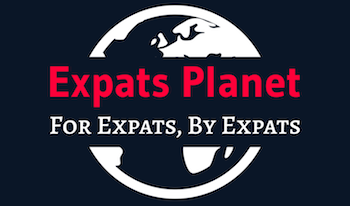Contents
- What’s Hiding in Your Food Labels?
- 1. Carrageenan: The “Natural” Additive That Inflames the Gut
- 2. Sodium Benzoate: The Preservative That Messes With Your Mind
- 3. Artificial Sweeteners Like Sucralose: Microbiome Mayhem in Every “Diet” Bite
- 4. Titanium Dioxide: From Candy Coating to Colon Trouble
- 5. MSG: Still Legal Still Controversial
- 6. Phosphates in Meat: More Than Just a Preservative
- 7. Synthetic Emulsifiers and Antibiotic Residues: Gut Barrier Breakdown
- Your Gut Is Sending You Signals, Are You Listening?
- Want to feel better? Start reading labels.
What’s Hiding in Your Food Labels?
If You Struggle With Bloating, Brain Fog or Fatigue These Everyday Ingredients Could Be to Blame
You’re bloated and foggy. You’re tired even after eight hours of sleep and a green smoothie that tasted like regret.
Your jeans suddenly fit like they were washed in boiling water.
I’ve been there.
I’ve felt it across continents and time zones.
In Albania, I spent a miserable week blaming street food, only to realize it was the so-called healthy granola bars from home.
The irony? The local food never betrayed me.
But the “health snacks” from the U.S.? Absolutely did.
Like a lot of Americans abroad, I used to think I was eating clean.
I read labels. I skipped the fast food.
Yet, I still felt off.
To top it off, I even flirted with going gluten-free in France, which lasted all of four baguettes.
In France! Was I out of my mind!
I’d land in Spain or Georgia or Italy and immediately feel lighter, more energetic, less… puffy.
Then I’d fly back to the U.S., eat a seemingly innocent salad with fat-free dressing and wake up feeling like someone stuffed my brain with mashed potatoes.
That’s when it hit me.
It wasn’t the carbs. It wasn’t the wine.
It wasn’t even the midnight cheese plate in North Macedonia.
It was the additives.
Stuff that’s been banned or heavily restricted in most of the countries I’ve lived in or traveled through.
While at the same time, still perfectly legal, and lurking in everything from your sandwich bread to your “natural” yogurt… in the good old U.S. of A.
In this article, I’m going to name names.
Seven to be exact.
Seven additives that could be quietly wrecking your gut, your mood, and your ability to think straight.
If you’ve ever walked out of a grocery store with a cart full of “healthy” options and still felt like a bloated zombie by dinner, keep reading.
This isn’t in your head. It’s in your food.
1. Carrageenan: The “Natural” Additive That Inflames the Gut
“Natural” means nothing on a U.S. label, but I forgot that in France.
I grabbed almond milk from a health store in Strasbourg, organic, chic label, eco-friendly font. It looked innocent enough.
It wasn’t.
One week later, I was bloated, miserable, and nearly cleared out a café with gas that could’ve triggered an evacuation.
Carrageenan, despite sounding like a beachside spa wrap, is a thickener linked to gut lining inflammation and reactions that mimic IBS.
Here’s the twist: Europe bans it in baby formula but still allows it in adult foods under strict limits.
So yes, you can find it in France, especially in processed or imported products at health stores.
But, in the U.S., it’s a free-for-all.
Carrageenan floats through your dairy-free drinks wearing a “halo” of clean branding and “plant-based” promise.
What to Watch For: If it’s creamy and vegan, read the label.
Carrageenan hides in plain sight.
2. Sodium Benzoate: The Preservative That Messes With Your Mind
Like most Americans, I met sodium benzoate in childhood.
It hides in sodas, sauces, juice boxes, and anything pretending to taste like fruit.
In Poland, a fellow expat mom swore her son’s mood swings vanished after ditching processed snacks from the States.
I rolled my eyes.
Then cut them from my own stash and suddenly stopped rereading the same paragraph five times.
This preservative has been linked to oxidative stress, hyperactivity, and even interference with the gut-brain axis… the internal Wi-Fi between your belly and your brain.
What to Watch For: Salad dressings, condiments, anything shelf-stable and suspiciously sweet.
If it lists sodium benzoate, your microbiome might not be speaking to you anymore.
3. Artificial Sweeteners Like Sucralose: Microbiome Mayhem in Every “Diet” Bite
Back in Spain, I stocked up on “diet” protein bars before hitting the Camino de Santiago.
Fewer calories, more “protein” and a stronger, lighter climb.
That’s what I thought anyway.
Turns out I couldn’t have been more wrong.
By hour two, I was bloated, gassy, and convinced something had died inside me and was now staging a haunting.
Sure enough, the culprit was sucralose.
Spain, like much of Europe, is packed with fitness foods and sugar-free snacks.
So, while the EU has stricter rules than the U.S., sucralose is still legal and widely used, especially in health stores and city shops.
Studies show it disrupts good gut bacteria and may even mess with insulin.
That “clean” bar? Not so clean once it hits your microbiome.
So much for “diet” food.
What to Watch For: Look for sucralose, aspartame or acesulfame potassium on any “sugar-free” or “diet” product.
If sucralose is on the label and it reads like a chemistry quiz, your gut may regret the hike more than your legs do.
Literally.
4. Titanium Dioxide: From Candy Coating to Colon Trouble
In Albania, I grabbed a pack of gum at a roadside kiosk during a bus ride from Saranda to Tirana.
You know, the kind that promises “whiter teeth” and “fresher breath.”
A fellow passenger behind me noticed the label and said, “Pretty sure that stuff’s banned in the EU.”
That “stuff” was titanium dioxide.
The EU banned it in food over DNA damage concerns, but it’s still allowed in cosmetics and meds.
Step outside the EU though, and it shows up like nothing happened.
In places like Albania for example, you’ll still find it in gum, candy, supplements.
In the U.S., it’s everywhere.
Gum, candy, frosting, supplements. It’s what gives things that bright, clean look we’ve been trained to trust.
The FDA? Still dragging its feet while the science piles up..
What to Watch For: Titanium dioxide hides low on ingredient lists.
If your gum looks like it came from a dental commercial, your gut might not thank you.
5. MSG: Still Legal Still Controversial
I once asked for “no MSG” at a restaurant in Bulgaria, and the waiter looked at me like I’d just insulted his grandmother’s recipe.
Turns out, they don’t even use it.
Back in the U.S.?
It’s everywhere, just hiding under names like “yeast extract,” “hydrolyzed protein,” or the classic “natural flavors.”
Some people get headaches. Others just feel off and never know why.
Eat enough of it and your gut and brain start texting each other in all caps.
What to Watch For: It’s not just in takeout. Check your snacks, soups, and spice blends.
MSG’s a master of disguise.
6. Phosphates in Meat: More Than Just a Preservative
In North Macedonia, I picked up a rotisserie chicken from a no-frills supermarket. It hit just right, juicy, satisfying and no stomach drama.
Back in the U.S., a few deli slices had me feeling like I swallowed a damp gym towel
The culprit? Phosphate additives.
They’re used to keep meat moist and shelf-stable, but unlike natural phosphorus, these synthetic versions absorb fast and hit hard.
Studies link them to kidney strain, heart issues, and possible gut disruption.
What to Watch For: Look for “sodium phosphate” or “potassium phosphate.”
If your meat’s weirdly juicy and lasts forever, it’s more lab than lunch.
7. Synthetic Emulsifiers and Antibiotic Residues: Gut Barrier Breakdown
Living in Ukraine taught me fast that trust in the food system isn’t universal.
Locals steered clear of state clinics and state meat. Antibiotics in food weren’t just whispered about. They were expected.
In the U.S., we just pretend it’s fine. Most meat and dairy still carry trace antibiotics, and we barely flinch.
Now toss in emulsifiers like polysorbate 80 and carboxymethylcellulose — the stuff that makes processed food smooth.
Studies show they break down your gut’s protective lining. Antibiotics hit the good bacteria.
Together, they quietly wreck your gut from the inside out.
What to Watch For: Long labels with stabilizers and additives. If you eat meat, go antibiotic-free.
Your gut barrier depends on it.
Your Gut Is Sending You Signals, Are You Listening?
Bloating, brain fog and midday crashes aren’t normal.
They’re warnings from your gut!
Forget blaming carbs or stress.
The real problem might be in the fine print on your food label.
After years in traveling and spending considerable amounts of time in France, Italy, Spain and even non-EU countries like Ukraine and Georgia, I noticed a pattern.
I felt better abroad. The U.S. allows way more additives… your gut knows it, even if you don’t.
Want to feel better? Start reading labels.
Better yet, stop assuming the “healthy” version is actually healthy.
Because if an ingredient is banned in half the world but ends up in your afternoon snack, your gut is probably not cool with it.
Have you changed your diet to heal your gut?
What ingredients do you now avoid without compromise?

David Peluchette is a Premium Ghostwriter/Travel and Tech Enthusiast. When David isn’t writing he enjoys traveling, learning new languages, fitness, hiking and going on long walks (did the 550 mile Camino de Santiago, not once but twice!), cooking, eating, reading and building niche websites with WordPress.

